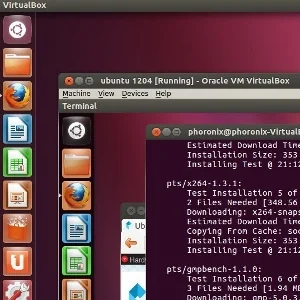VMware To Overhaul Their Virtual Graphics Driver

For those not already briefed on VMware's vmwgfx / SVGA II graphics driver, read the article from earlier this month to get an understanding of their virtual driver. VMware's solution for accelerating graphics (and other APIs supported by Gallium3D) under virtualized guests is quite elaborate and is better than what can be found in VirtualBox (they have their own driver stack), Xen (they had a similar Gallium3D driver but it's no longer maintained), KVM/QEMU (still coming), etc. While their driver is already good, it's about to get even better.
For the past few weeks there's been a thread on the Wayland development mailing list about the vmwgfx driver and trying to get it to run with Wayland. There's hope that it will work quite well eventually, but this morning somewhat of a bombshell was dropped by Thomas Hellstrom. Thomas is one of the VMware developers that joined the company when Tungsten Graphics was bought out and is a name known by most Phoronix readers, but for those that don't he was the principal architect of the TTM memory manager.
Thomas basically shares that vmwgfx for Linux will receive some development in the near future. Among the areas these developers will be focusing on is improving the DDX driver interactivity, supporting the newest compositing GL desktops, getting the kernel module out of staging, properly supporting kernel mode-setting, and X/DRI2 EGL. With the X/DRI2 EGL support, Wayland should begin to work well. Obviously proper KMS and support for the latest compositing desktops (i.e. Unity, GNOME Shell / Mutter) is also a big win for users.
Hellstrom's message can be read here. Seeing as the message is coming from the VMware / Tungsten developers doing much of the upstream Mesa / Gallium3D work, there's an extremely good likelihood that this work will materialize in a good manner and work quite well.
10 Comments

